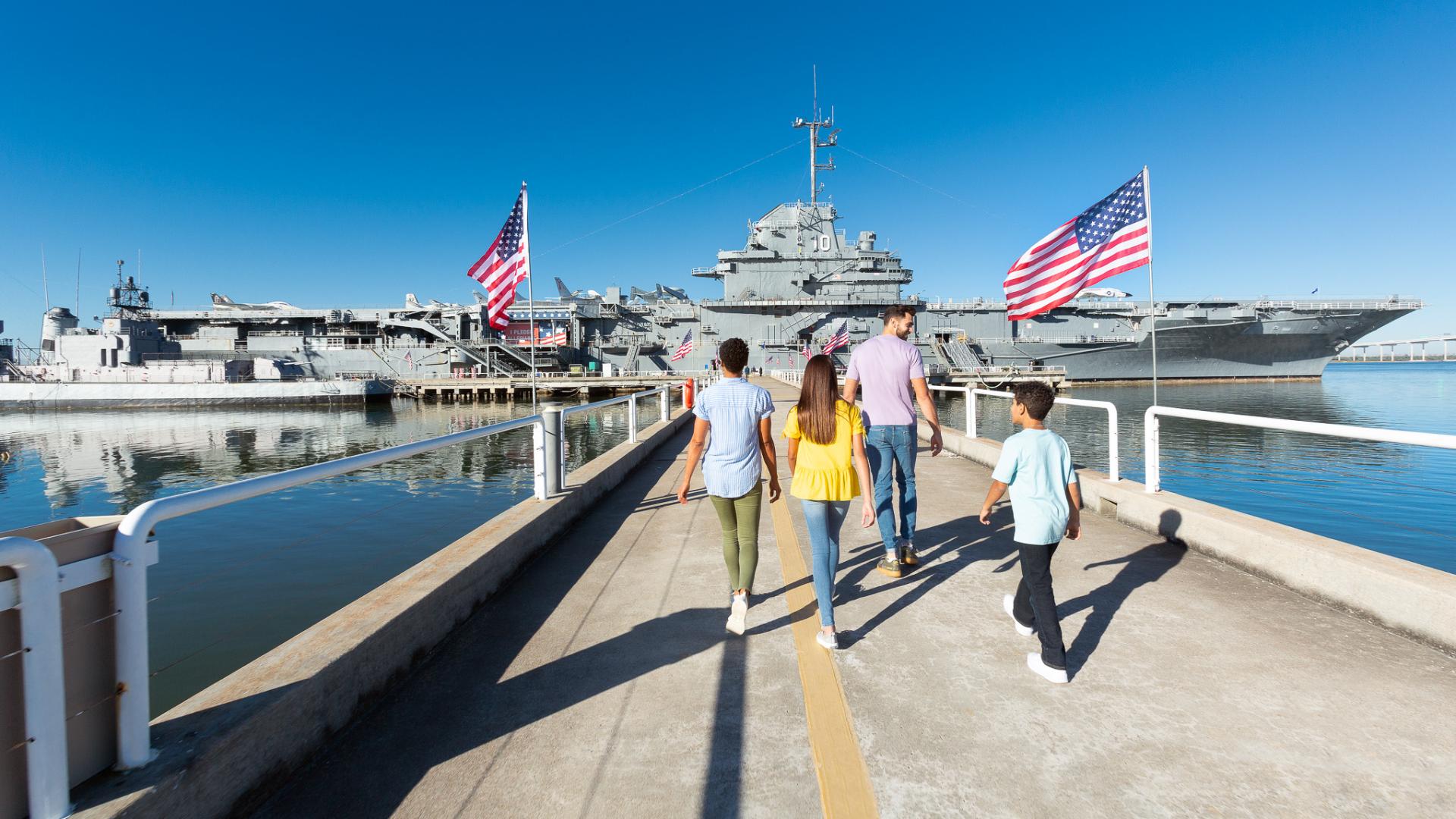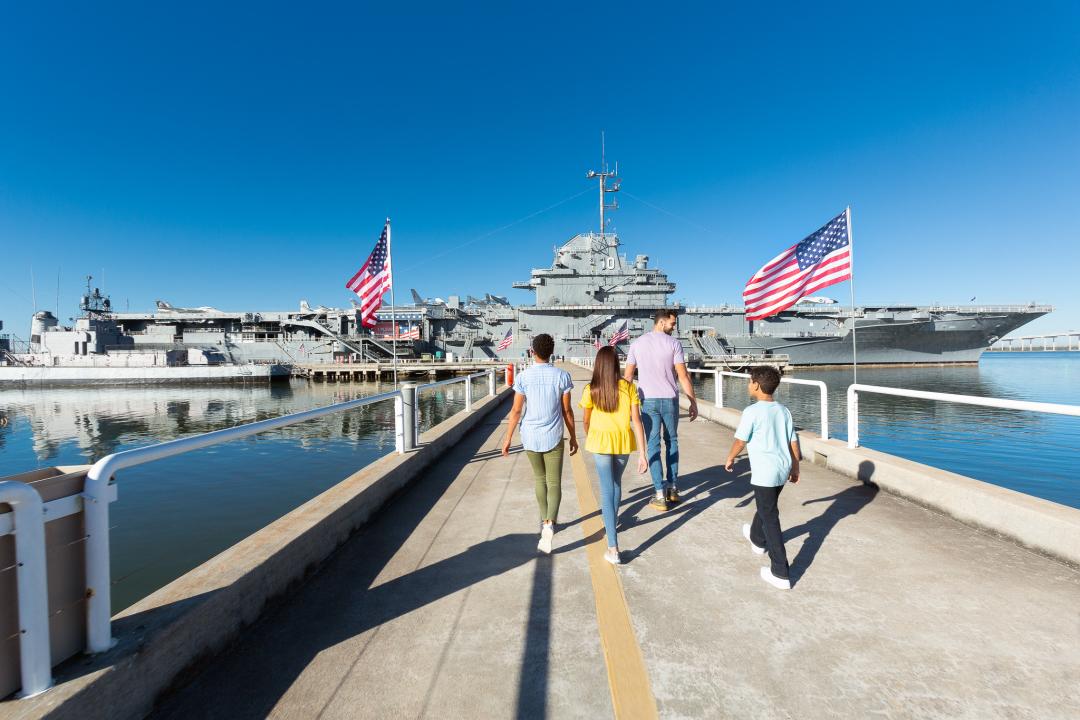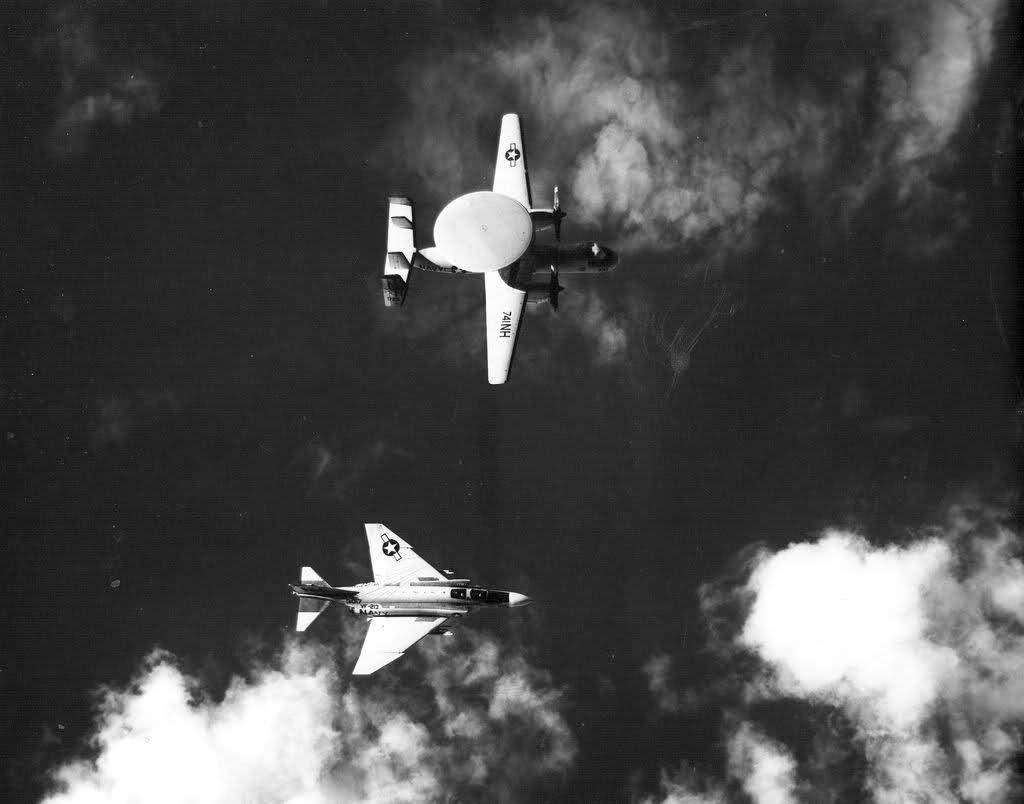
On 19 December 1962, an E-2A Hawkeye, flown by naval aviator Lieutenant Commander Lee Ramsey was catapulted from the flightdeck of the USS Enterprise (CVAN-65) during the first at sea test of a nose-tow gear designed to replace the catapult bridle system and reduce the time required between aircraft launches on aircraft carriers. This gear would also make aircraft hookups to the catapult safer. Shortly after the Hawkeye, an A-6 Intruder was launched also via nose-tow gear. Another name for the nose-tow gear was launch bar and the tow link assembly is that part of the gear that would raise the nose-tow, launch bar, up after launch to allow the nose gear to cycle properly and fit into the nose wheel well. Lots of aviators have suffered a "Tow Link" light after launch and had to deal with the problem. Those who raised their gear with a tow link light would not be able to get the nose gear to extend for landing, because it would be wedged up in the nose wheel well...not a good thing for carrier landings!
At Patriots Point you can see the evolution of naval aircraft from bridle launches to nose-tow launches by closely examining the nose gear and the underneath areas of our aircraft. Below are images from one of our bridle launched aircraft (F-4J Phantom) and our nose-tow, launch bar, aircraft.
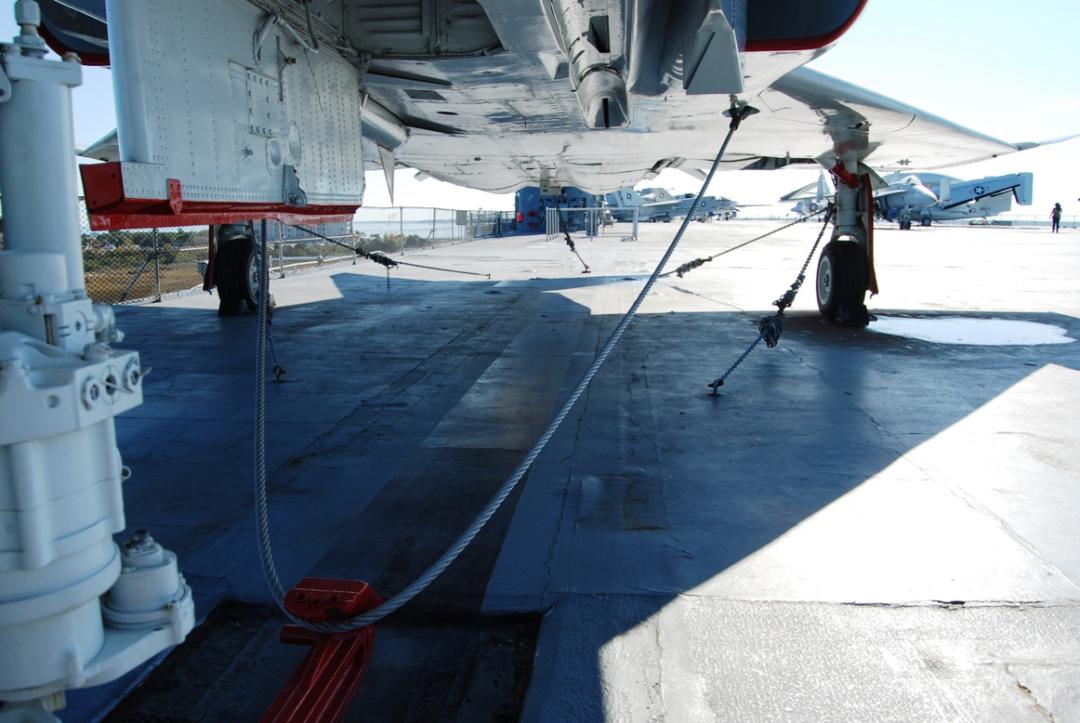
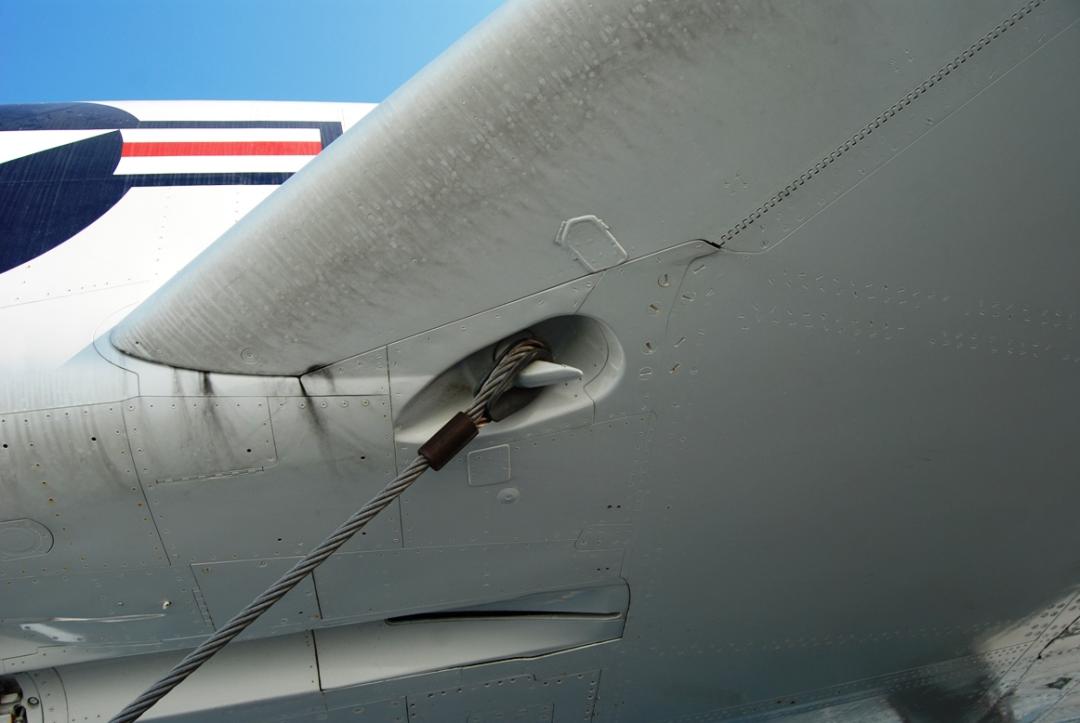
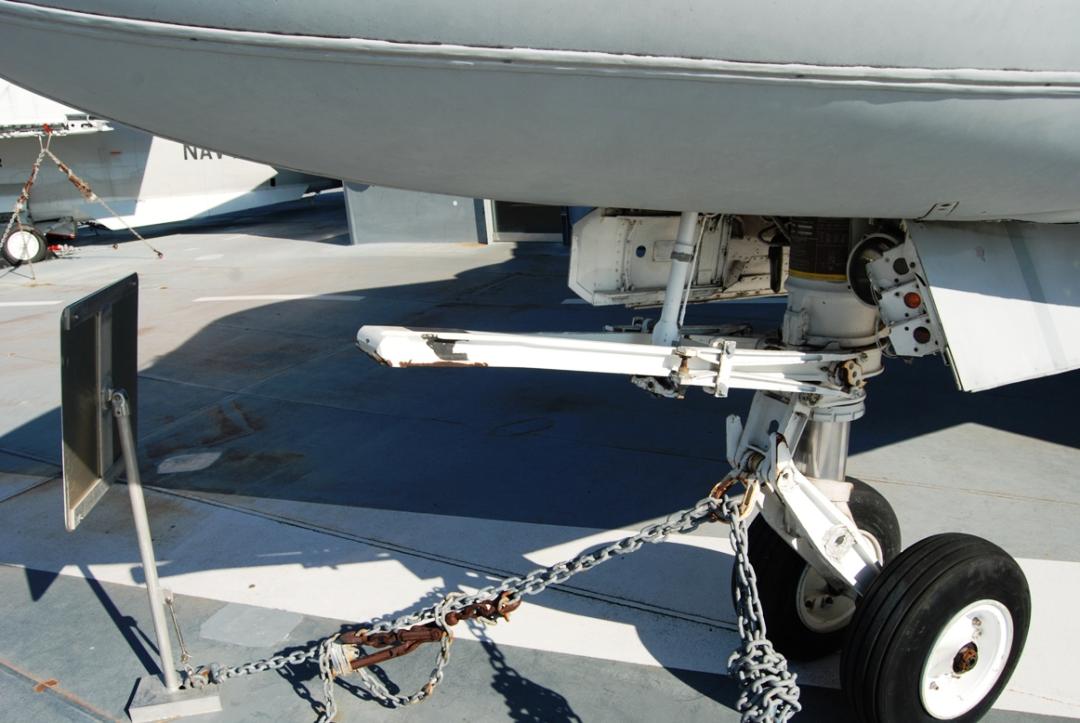
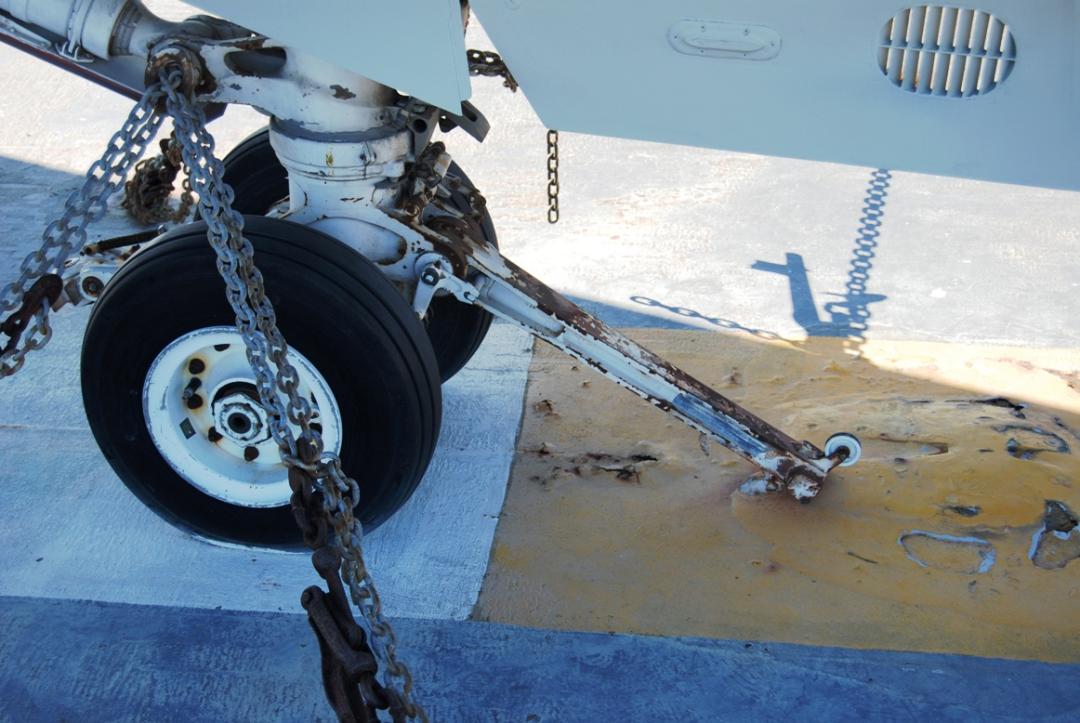
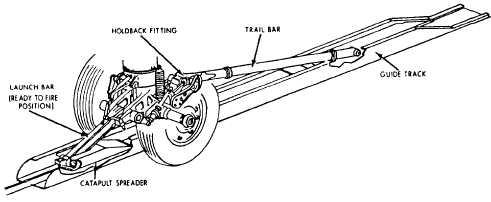
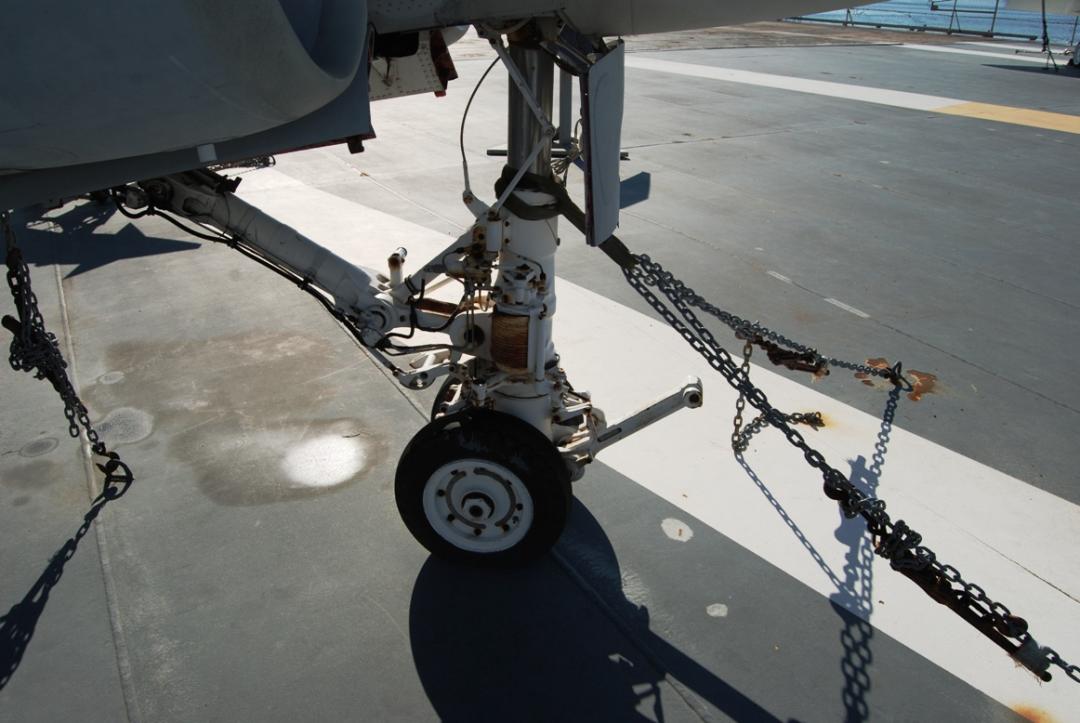
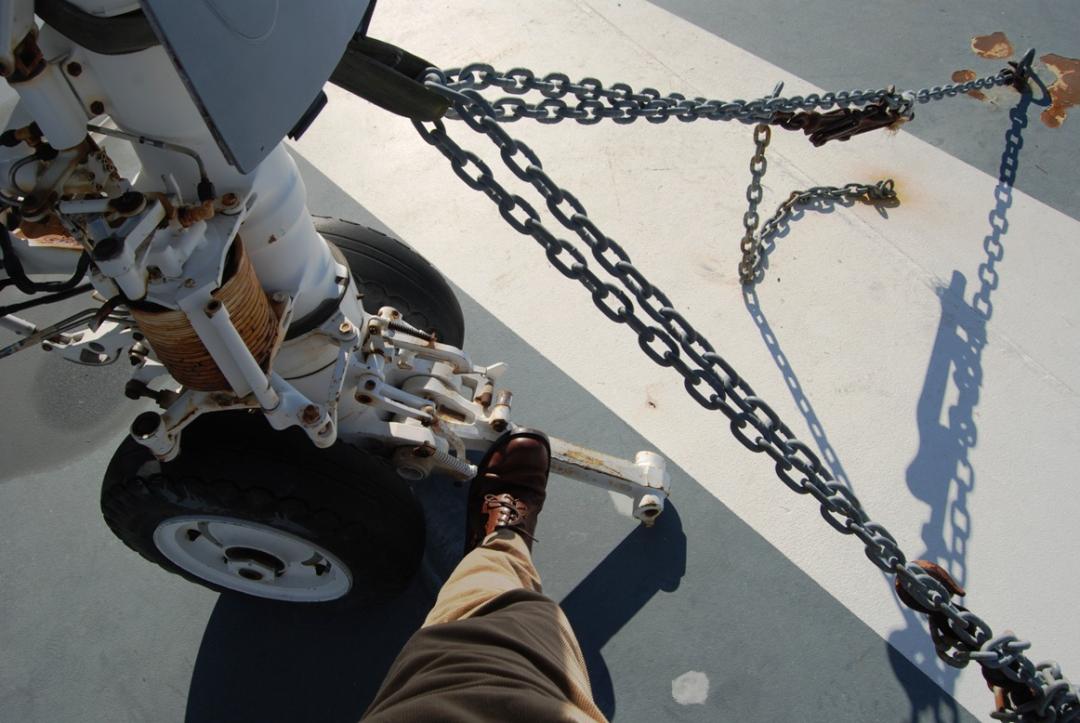
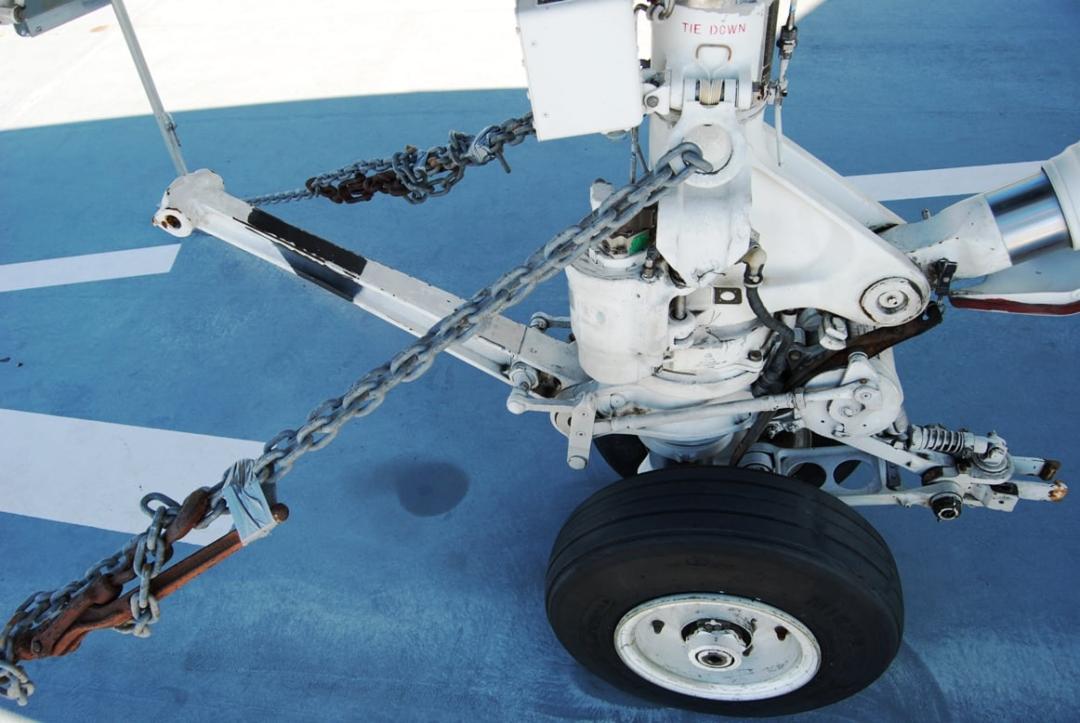
Watch our highly trained sailors hook up a F-18 Hornet to this catapult on USS Enterprise (CVN-65), which again launched the first nose-tow aircraft in 1962, forty-nine years ago today! Here you can see it all happen and wonder at our men and women who perform this duty daily!
